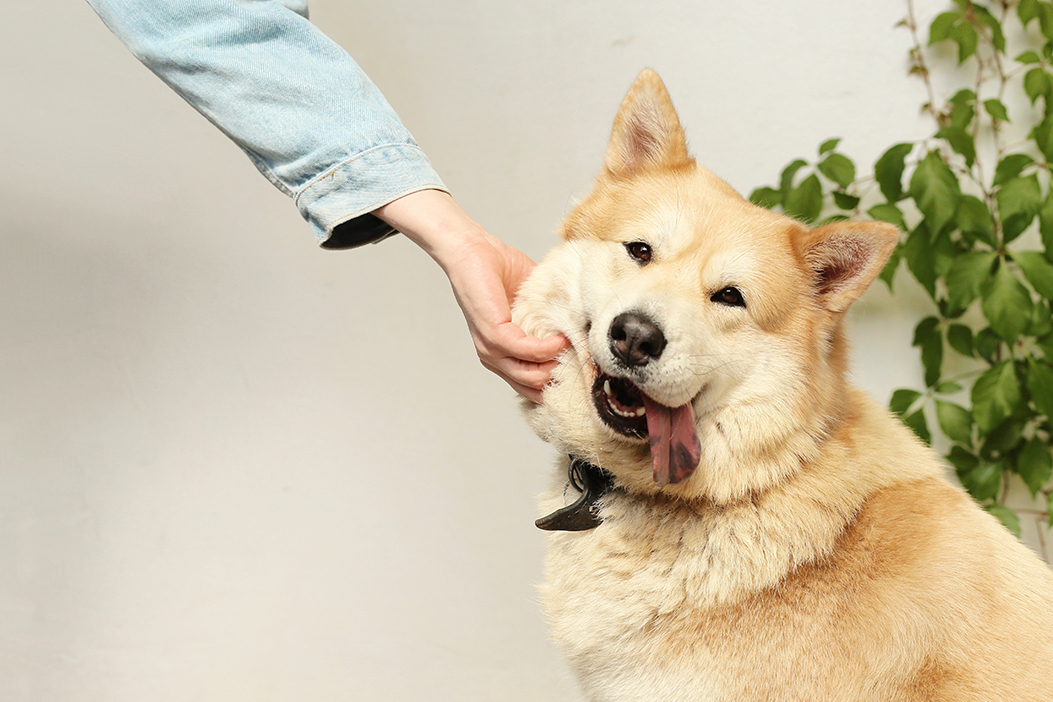It seems like our dogs will bark for just about anything and everything so the article To Bark or not To Bark – 5 Basic Steps to Successful Training your Dog can help you.
Training your dog to stop barking may seem daunting but with a little bit of work from you, anything is possible! In this article, we guide you about training your dog so you have the tools you need to teach your dog when and when not to bark.
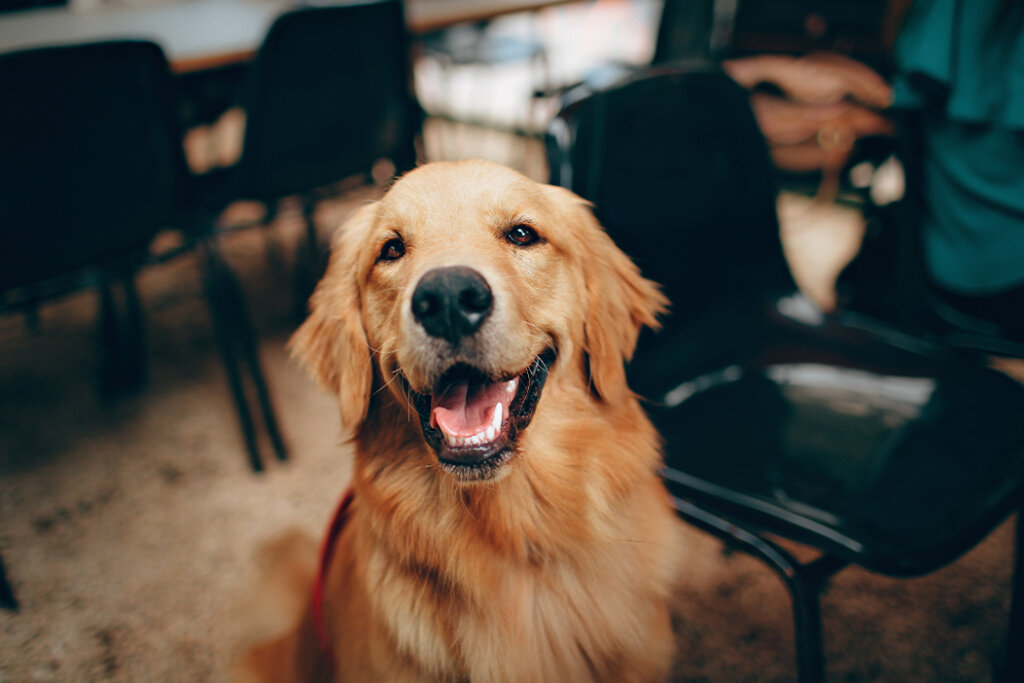
Until you train your dog otherwise, they basically think they must report everything pretty much they hear, as they hear it. To your dog, anything can be a potential threat, and barking is their only alarm. Especially when you are living in an apartment, one of the main reasons your dog barks is random noises.
To dogs who are sensitive to noise and vibrations, loud neighbors, other animals, kids, and random noises that come with the everyday life of apartment living probably sound a little bit like a purge until you see what is really going on.
The 5 Basic Steps to Successful Training
It is important not to discipline your dog every time they bark, but teach them when and how to instead. You can use these steps to train your dog for almost anything.
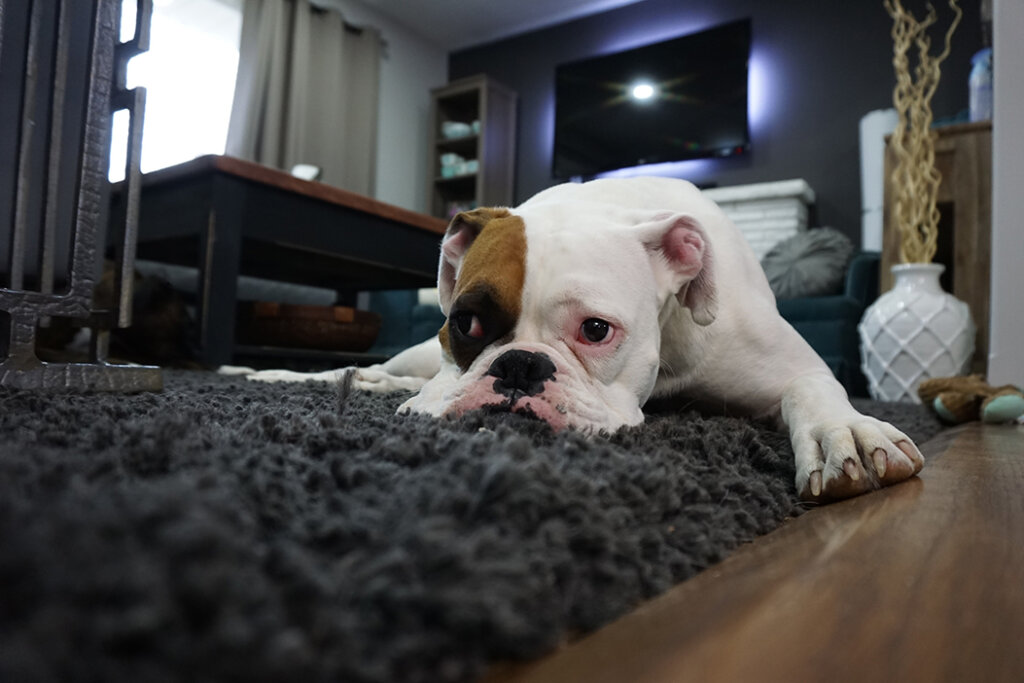
One of the best ways to have your dog bark trained is by teaching them how to bark properly. Once your dog realizes there is a time and a place for barking, they will start to bark less at seemingly everything.
The 5 Steps to Training Your Dog are:
- Observe (The Reaction)
- Introduce (The Sound)
- Replace (Reaction with Command)
- Reward & Repeat
Observe
Start by observing what triggers your dog barking so you can plan what you need to work on. It’s likely your dog is triggered by the same noises every time so take note of what you need to train your dog on and work on those areas specifically.
Introduce
Next is to introduce your dog to the sound so they can understand where it is coming from. Much of the time, dogs are barking out of curiosity, and you can help them stop barking at the same things in the future by teaching them what the sounds are.
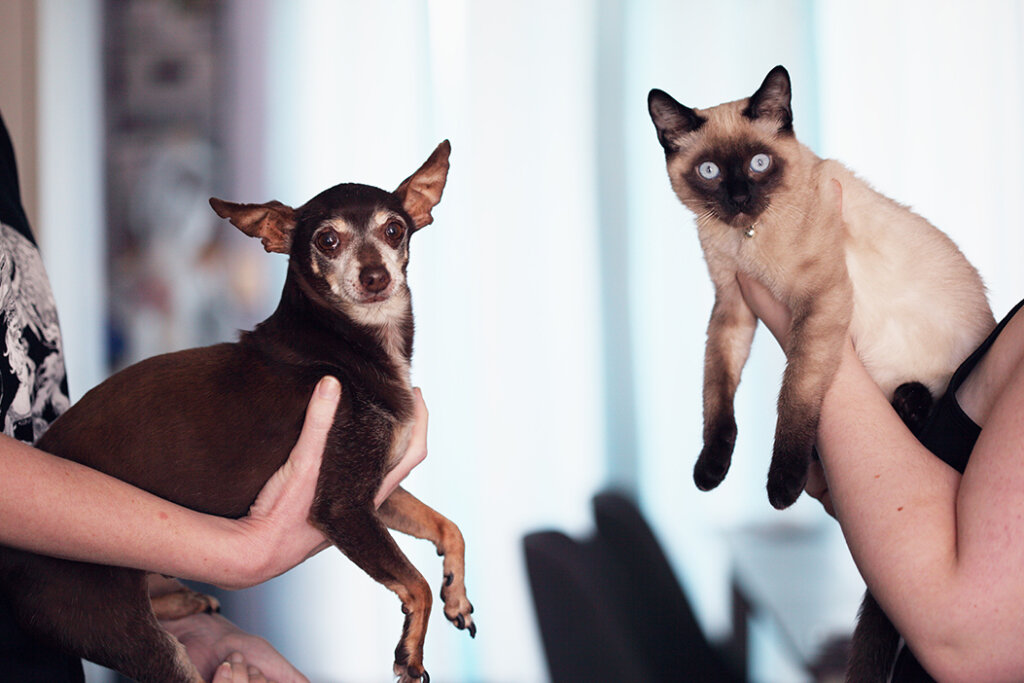
For example, if your dog is triggered by noise in the hall, let your dog watch what is making the noise. If your dog barks at people in the hallway, it is helpful to try and let your dog meet as many of your neighbors as possible.
Likely your pet barks at your next-door neighbors the most since they’re the closest, and your dog can’t always tell if it’s their door or yours. So, if your neighbor and your dog are both friendly, try a meet and greet as they’re coming and going so your dog gets familiar with them and stops barking at them.
The Training Exercise
Now that your dog is familiar with the white noise and people of your building, start training them on the sound of your next-door neighbors if that’s a problem area for your dog.
Have your neighbor leave and come back and work on how your dog reacts. When your dog starts to react to the noise of your neighbor, start by getting your dog to sit and work up to add in your own ‘no barking command’.

When your dog hears them and starts to react, get them to sit and stay. Open your door, so your dog can associate the sound with the person. Now that your dog knows that the sound of the keys in the lock next door is just your friendly neighbor who isn’t a threat, they will start barking less.
Repeat the exercise; this time, don’t open the door right away. Ask your dog to sit and use your no-barking command to get the dog to sit and try to be quiet before opening the door. Your dog probably knows who is on the other side of the door if you do this a few times in a row, so it is important to do this outside of your training exercise as well. As your dog starts to change his reactions, keep refreshing the training and rewarding their efforts.
Barking at Your Door
The next situation you want to train your dog in is when there is a knock on your door. Since your dog thinks he is doing his job by reporting every noise to you, it is important to teach him which noises to look out for and how to react to them.
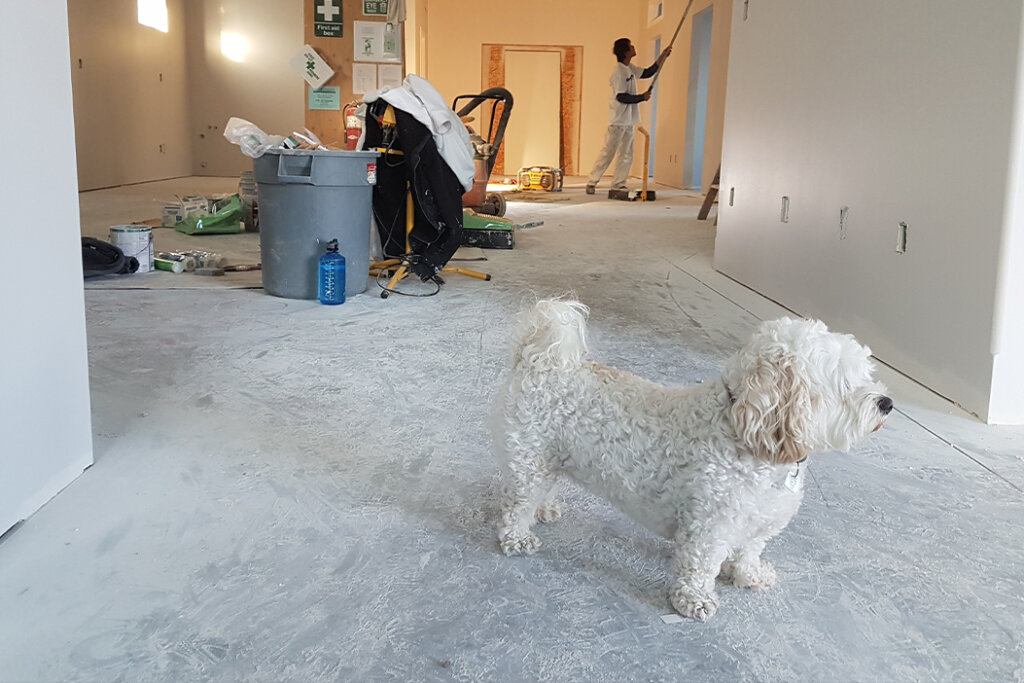
Once you have observed how they are reacting and you have decided how you want them trained, it’s time to work on replacing their barking with that reaction instead. Training is most effective if you can dedicate time out each day for your dog where you are going to work on the specific things, rather than just trying to correct the behavior as it pops up.
The first thing you want to do is get their attention by having them sit. Once they’re sitting, work on getting them to stop barking using your designated command. Reward them for sitting and for any efforts made to stop barking at your word.
Once you have them trained to stop barking on command try to repeat the situation and reward them for stopping a few times in a row. Try to avoid calling your dog badly, focus on rewarding for changed behavior instead.
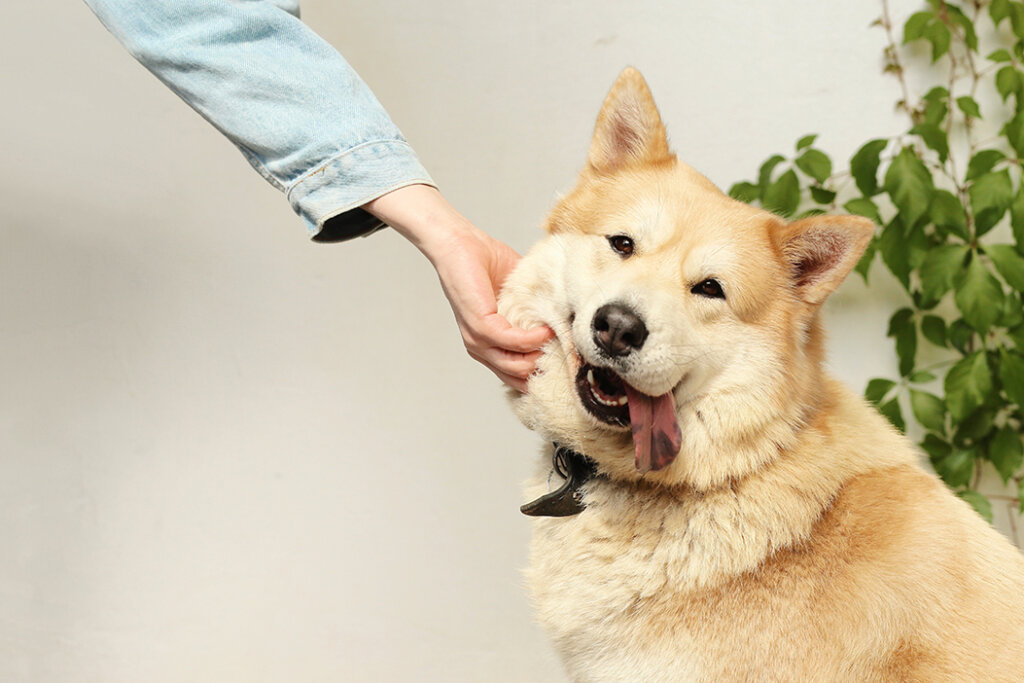
In time, your dog will learn to ignore the noises entirely. Once your dog is more used to everything and you start training, you can begin to train them on how they are barking at your company and at you.
Knock Training
The next thing you want to train them on is knocks on the door. A big reason why dogs bark is they think you or someone else is at the door. So, you want to teach them how to tell the differences and how you want them to act.
The best way of doing this is with knock training for when the company is at the door and for when you are coming home.
When It’s Company
Have a friend stand on the other side of the closed door with you and your dog inside. Have them knock on the door, and you train your dog on how you want them to react to someone knocking on the door.
Ideally, you want to start with training them to sit and get them to stop barking using their newly taught word.

- Observe
Get your friend to knock, and you observe your dog’s reaction, try to resist intervening or saying a command, and wait out until they are done, if possible.
- Introduce
Introduce your dog to what is making the sound. Show your dog that it is actually someone at your door that they are responding to. Don’t open the door but acknowledge that your dog is alerting you about someone.
Next, you want to get them to sit and if you can, stop barking using your word before you open the door. If they still are barking, continue training.
- Replace
Next, you want to do is replace the reaction with what you are teaching them.
Repeat your friend knocking and your dog sitting with rewards a few times in a row. Once they are sitting for you, as a reaction, you can teach them a command to go with it that tells them to stop or not to bark when there is a knock at the door.
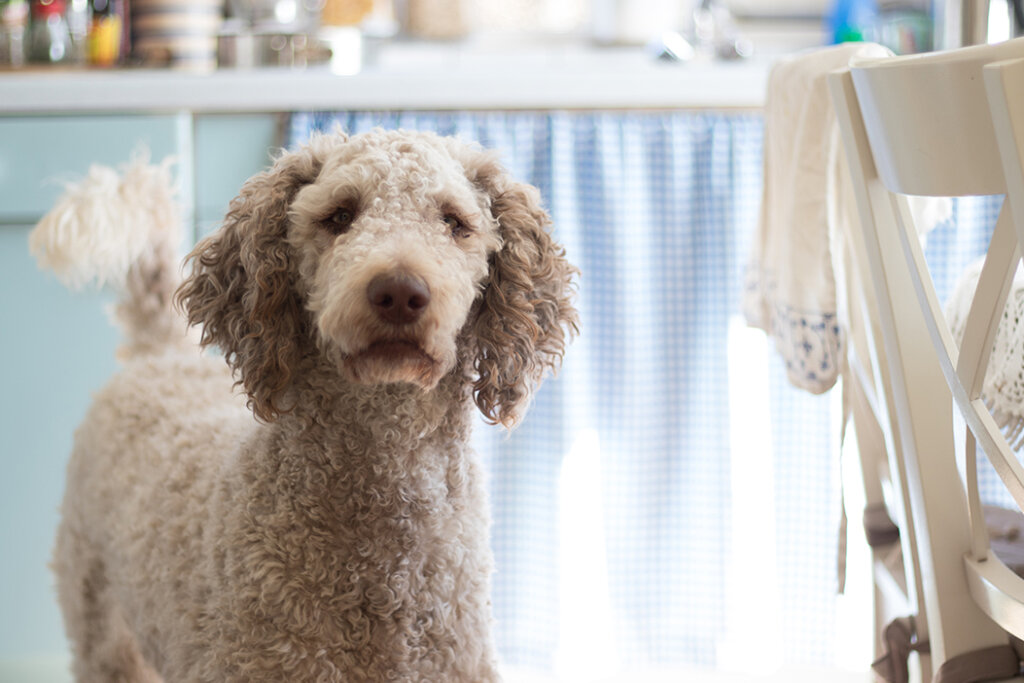
Have your friend knock again, and when your dog barks, have them sit and tell them the command. Encourage them to stop barking with that command and once your dog stops barking, say the command and praise them, so they associate the word with being quiet and being quiet with praise and reward.
- Repeat & Reward
Some dogs pick it up right away; others may need a few more training days or weeks. It is important to keep training consistent until your dog does get it before they start to go back to their old behavior.
Dogs respond much better to praise and reward. Make sure you mix up the rewards for your dog with treats, pets, and getting to play with a toy.
When It’s You
When it comes to training your dog to not bark when you are at the door, you want to do a similar exercise.
Practice walking up, knocking, putting the keys in, whatever makes your dog bark when you come home, and start with teaching them to replace the behavior with sitting and the quiet command.
You want to avoid punishing your dog for barking, especially while you are training them. If your dog feels like you are getting angry at them for barking, this may make your dog’s barking or other reactions worse and harder to train.

Continue to praise them for the following days to a couple of weeks while they are still fresh with it. Remember, when it comes to changing behavior like barking with your dog, consistency, praise, and patience are key.
Your dog is only as smart as you make them.
Training your dog how to react when it is you helps them tell the difference between strangers and you when they are home alone. This will help your dog be more relaxed towards people in the hallway passing by and your neighbors coming and going while you are out as it teaches your dog to recognize when you are home and when it’s just someone passing by.
It is important to remember that your dog is only as trained as you let them be. Every dog is different. There is no magic number of times or amount of time until your dog is totally trained in this way. Usually, a behavior like barking can take a few weeks. Just remember to be persistent and patient!

